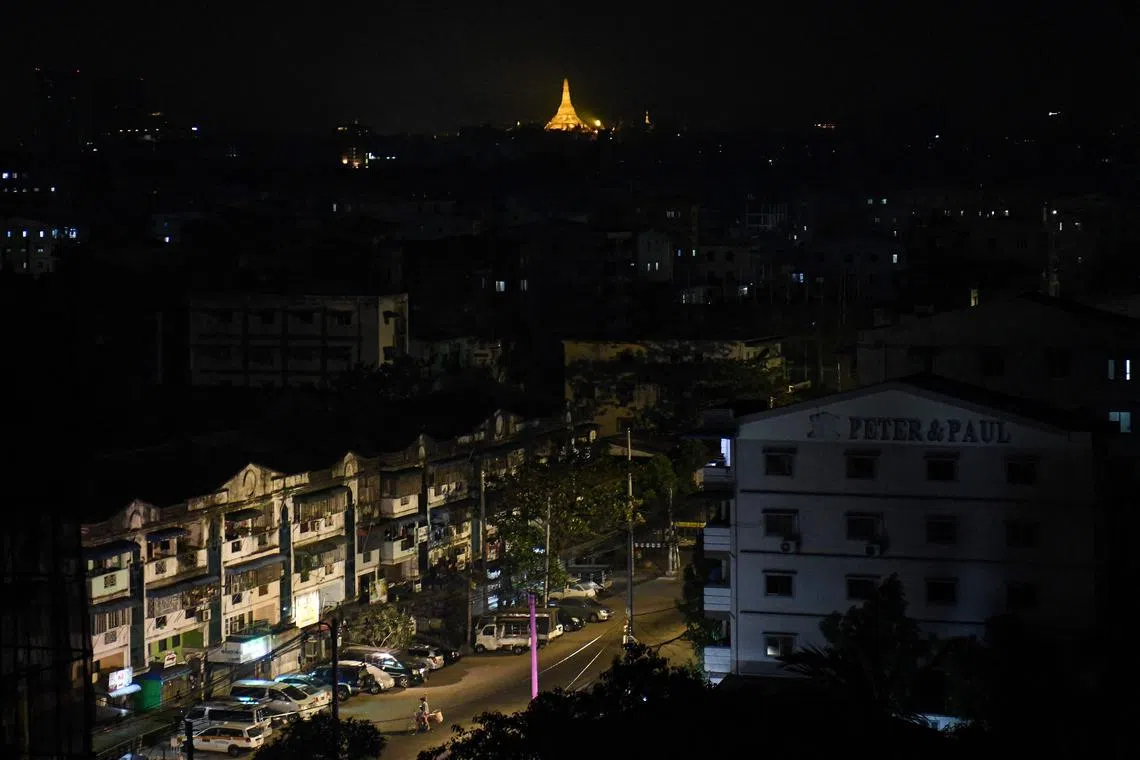Myanmar says rebel attacks, gas shortages worsen power crisis
Sign up now: Get insights on Asia's fast-moving developments

Natural gas shortages in Myanmar have helped take production down to just 2,200 megawatts (MW) a day, from the usual figure of 4,000 MW.
PHOTO: AFP
Follow topic:
Myanmar’s electricity generation has dropped to about half the normal figure, as rebels have damaged critical transmission networks, causing lengthy blackouts in wide swathes of the South-east Asian nation, state media said on Jan 17.
Natural gas shortages in the war-torn nation have also helped take production down to just 2,200 megawatts (MW) a day, from the usual figure of 4,000MW, they added.
It was a rare admission of the junta’s inability to manage critical infrastructure nearly four years after the powerful military ousted an elected civilian government, triggering a civil war that has engulfed the impoverished nation.
“Currently, electricity is being supplied to Yangon region at 48 per cent, Mandalay region at 17 per cent and the rest, including Naypyitaw, at 35 per cent,” the Global New Light Of Myanmar newspaper said, referring to the two main urban areas and the capital.
Power cuts have worsened in 2025 in the commercial capital of Yangon, with supply limited to four-hour blocks, followed by eight-hour shutdowns, in a plan the power ministry unveiled last week.
“We need to schedule cooking and washing at specific times,” said Mr Aung, a 33-year-old resident of the city, Myanmar’s largest and home to 7.3 million.
“We can’t sleep well because there is no power and phone connections don’t work well because mobile telephone towers always experience blackouts,” added Mr Aung, who gave only his first name out of safety concerns.
Transmission links destroyed
A shortfall of 1,009MW in electricity generation stems from the destruction of 14 transmission links to power plants, Myanmar’s power ministry said in a statement. An accompanying production drop of about 430MW resulted from natural gas shortages and the closure of a hydro-electric project.
Armed pro-democracy rebels, whom the junta calls “terrorists”, have damaged power lines at more than 160 spots and 171 transmission poles, with at least 30 people killed during repair efforts, the power ministry statement said.
A spokesperson for Myanmar’s anti-junta shadow administration, the National Unity Government, accused the authorities of mismanagement.
“They didn’t do any maintenance nor improvement because they are too focused on their own personal interests,” said Mr Kyaw Zaw. “They destroyed all the electricity projects under NLD,” he added, referring to the National League for Democracy, which led the government before the coup.
“Foreign investors also got out of the country as they don’t trust the junta.”
Just over 40 per cent of Myanmar’s electricity is generated from gas, with the rest coming from hydropower and coal, said research firm BMI.
“With no substitution for domestic gas supplies, the country will find it increasingly difficult to maintain this level of gas-fired generation capacity based on domestic production alone,” it said in a December note.
Myanmar’s power crisis has worsened steadily since 2021, the World Bank said in 2024, blaming ageing power plants, the gas shortage, damage to the national grid, lack of spare parts and weak management.
“The operational capacity in early 2024 is as low as it was in 2015, meaning that years of progress has effectively been undone,” it added. REUTERS

